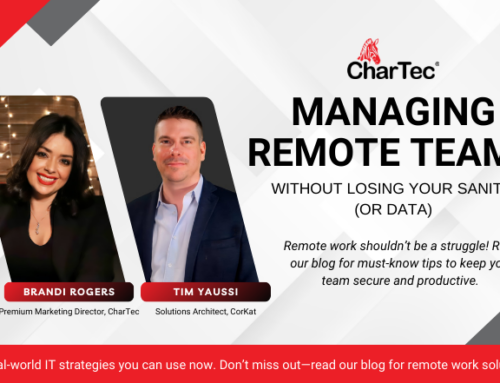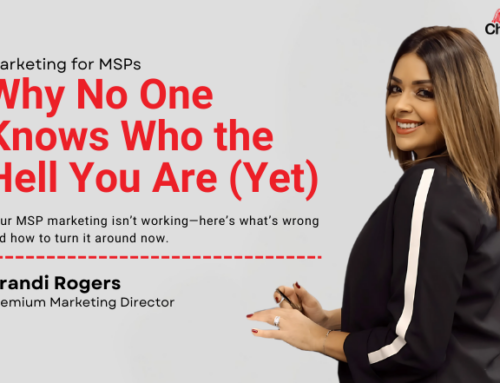Marketing, in general, is misunderstood. If you ask five different people what the term means, you’ll probably get five different answers. Some might equate it to branding, while others may think of it more as campaigns. And while it does include many of these elements, marketing is a much broader pursuit with lots of moving parts.
Unfortunately, when you look at some of the big companies out there that are nailing marketing, it’s hard to translate what they’re doing when it comes to your MSP. For example, many people look to Apple’s ads and campaigns as an example of excellent marketing. But it’s a lot easier for them to market their products than it is for you, and that’s not just because your advertising budget is only a tiny fraction of Apple’s – it’s because iPhones and MacBooks are exciting, and everyone wants them.
People pay for managed service providers because they need them, not because they want them. It’s more like getting car maintenance or replacing a malfunctioning dishwasher. You’re going to need a solid approach that has proven to be successful at marketing something intangible. Here are three objectives that form the foundation of CharTec’s marketing strategy.
Marketing: Brand your MSP
One aspect of your marketing strategy is branding your MSP. These days, most businesses are aware of what MSPs do and why they need them, and many have already worked with one or more MSP. So instead of focusing solely on what you do, you want to make sure prospects know your company is an option when they need you. This process is essentially getting your name out there by educating the public via blogs, sending out newsletters and emails, or appearing at events – ideally, you’ll do all these things!
Pique curiosity
Part of marketing is piquing curiosity in the minds of your prospects. This approach comes from one of CharTec’s favorite books, Secrets of Question-Based Selling. It’s something all our employees read, and it can change your sales mindset dramatically. The book discusses curiosity strategies like providing a glimpse of value. The idea is that you want to give prospects just enough information to make them curious without giving everything away.
One example of creating curiosity would be letting people know they could write off major purchases and get tax benefits for their businesses. You could entice prospects using the glimpse of value approach by saying, “Do you want to learn how you can keep more money in your pocket this tax season?”. Most of us wouldn’t say no to that!
The Herd theory can also come into play. It’s based on the idea that people want to know what their competitors are doing. You might tell a prospect how you’ve been able to help a competitor in the industry to attract their interest. No one wants to be left behind when it comes to technology.
Identify interest
Creating curiosity is an important step, but it’s not enough to land a sale. Identify the businesses that are interested in your marketing efforts. Who is opening emails, clicking on links, reading blog posts, and requesting eBooks? These are the leads you want to focus on.
Lead scoring can determine who is most likely to sign on the dotted line. Many marketing platforms make it easy to set up lead scoring systems. You can assign a points value to specific activities, such as 2 points for opening an email or 5 points for clicking on a link within the email. This system will enable your sales team to make calls based on your prospects’ level of engagement with your marketing so they can focus their efforts where they’re most likely to get results.
Ultimately, businesses will always need MSPs. The trick to gaining new business is ensuring that your MSP is the one people turn to when they’re ready to sign.
If you’d like help with your marketing efforts, we offer different levels of Premium Marketing that might help you. Contact us anytime!







Leave A Comment